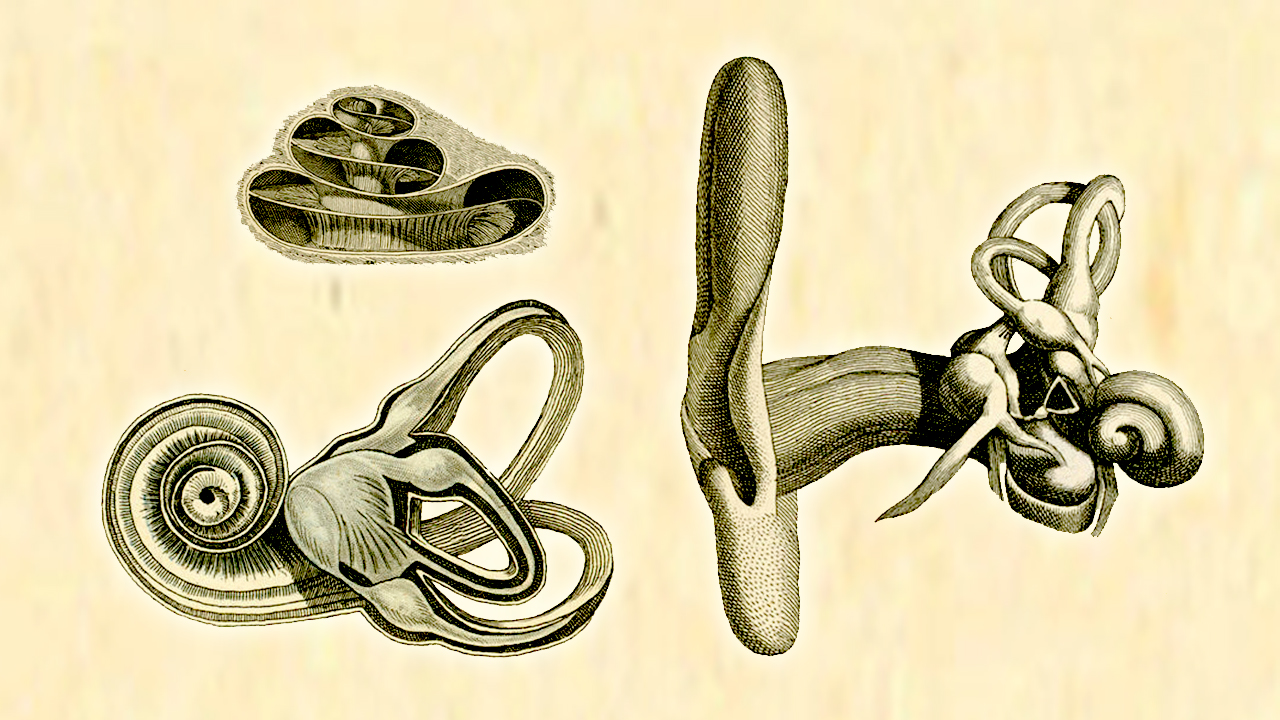ANIMAL’s feature Artist’s Notebook asks artists to show us their original “idea sketch” next to a finished piece. This week, Danish artist Jacob Kirkegaard — one of the artists exhibiting at MoMA current “Soundings” show — shares the inspirations and audio from his sound art piece Labyrinthitis, sent to us just before his recent performance of the piece at Eyebeam.
I haven’t looked into the first notes on my pieces for a long time, but I’ve been too busy creating new works. I imagine I’ll do that when I’m an old man sitting in my rocking chair with all my old sketches. I’m on my way to sound check, but I just had a quick peak into my old folders and selected some text fragments from my early notes on LABYRINTHITIS.

Jacob Kirkegaard’s early Labyrinthitis notes:
Composition – labyrinthitis
* Scala Vestibuli (Preludium) or Disorientation (Preludium)
* Vertigo (Canon)
* Nausea (Finale)SOAE (Spontaneous Otoacoustic Emissions) = why do some people’s ears produce these tones? James, the scientists proposes: it might be a feedback of a sound stored in the cochlea.
Is the proposing that the ear has a memory?
It is almost like Giambattista della Porta’s visions on sound being trapped inside spiral tubes.One hair (ear hair / hair cell) responsible for a frequency, transferred into electrical information, like ‘Inverted Hearing’, a paradox,
We cannot hear our own SOAE’s. Just like we don’t hear the sound of Cosmos (Pythagoras;) anymore, because we hear it constantly and thereby block it outThe ear, not only receiving but also emitting sound. Like black holes emit massive deep frequencies. ‘Model of a brain-ear emitter/receiver. The recursive. Inversion. Reversibility. Mechanical process of hearing; resonant frequencies of our cochlea. Pressure waves, the resonant chambers, liquid, cells, electricity. .
To create a possibility for the viewer to listen to the mechanics of their own personal sound / very ears.

The “immersive, sonic symphony of inner ear sounds” at Eyebeam took place inside a cube structure inside the main gallery space. The piece consists of “tones generated within the artist’s inner ear, which in turn spark audible emissions within the audience’s own ears.”
Astoundingly– our ears not only hear sounds, but create them as well. Inspired by a medical technique meant to test for deafness in newborns, Kirkegaard’s performance utilizes tones recorded from his own ears, which when listened to, will generate specific tones within the listener. Kirkegaard’s ear tones– played at a specific frequency and ratio– will cause physiological changes within the audience, thereby generating a third tone– an “otoacoustic emission,” also referred to in musicology as a “Tartini tone.” Taken as a whole, the composition is an immersive and metamorphic experience, engaging little-known and seldom witnessed sensorial and physiological properties within the listener.
Here is an audio excerpt, courtesy of the artist.
Previous Artist’s Notebook selects:
Artist’s Notebook: Tristan Perich
Artist’s Notebook: Daniel Temkin
Artist’s Notebook: Rick Silva
Artist’s Notebook: Yoshi Sodeoka
Artist’s Notebook: Actually Huzienga
Artist’s Notebook: Cody Critcheloe, SSION
Artist’s Notebook: Evan Roth
Artist’s Notebook: Jennifer Catron and Paul Outlaw
Artist’s Notebook: ULTRAFUTURO
Artist’s Notebook: Don Hertzfeldt


